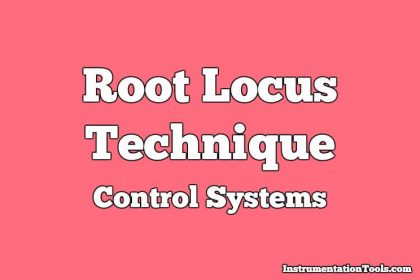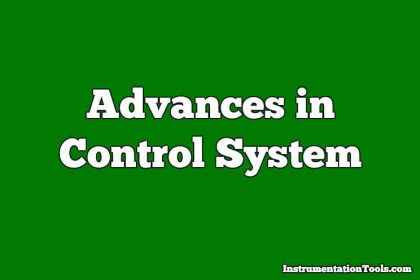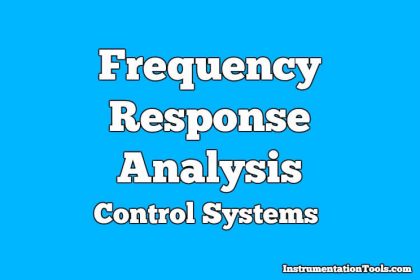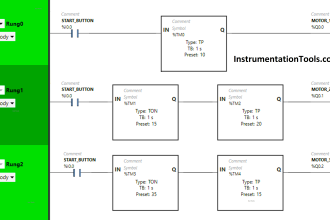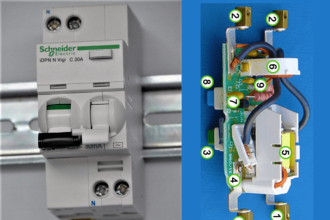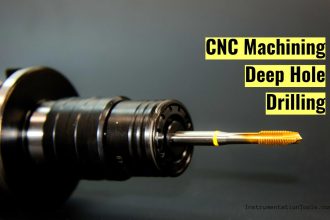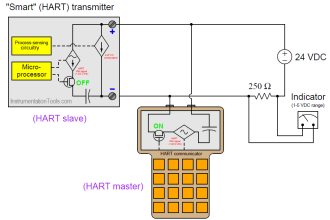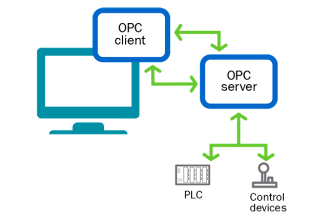Magnetic Wind Instruments Questions & Answers
1. Which of the following does not occur in Hartman and Braun oxygen analyzer based on magnetic wind?
a) Oxygen is attracted to magnetic field
b) Oxygen becomes less paramagnetic due to rise in temperature
c) Resistance change in a resistance connected to the Wheatstone bridge occur
d) Wheatstone Bridge becomes balanced due to temperature change
Answer: d
Explanation: In Hartman and Braun oxygen analyzer, the magnetic wind cools the heated winding. As a result, the bridge becomes unbalanced.
2. Which of the following is not a cause of error that could occur in Hartman and Braun oxygen analyzer based on magnetic wind?
a) The filament temperature could be affected by changes in thermal conductivity of the carrier gas
b) Hydrocarbons in sample stream may react on the heated filaments
c) Gravitation chimney flow effect lead to errors when cross tube is horizontal
d) Combustible gases may react on the heated filaments
Answer: c
Explanation: Error occurs when cross tube is vertical. When cross tube is horizontal, errors due to gravitation chimney flow effect is avoided.
3. Hydrocarbons need to be removed from the sample gas to avoid errors in Hartman and Braun oxygen analyzer.
a) True
b) False
Answer: a
Explanation: Hydrocarbons need to be removed from the sample gas to avoid errors. This is because they may react on the heated filaments and lead to change in temperature and resistance.
4. Magnetic wind analyzers are also known as which of the following?
a) Thermo-magnetic analyzers
b) Electro-magnetic analyzers
c) Thermo-analytical analyzers
d) Hot wire analyzers
Answer: a
Explanation: Magnetic wind analyzers are also known as Thermo-magnetic analyzers. In Europe, it is known as Magnetic wind analyzers. In United States, it is known as Thermo-magnetic analyzers.
5. In OXYMAT-M oxygen analyser which of the following is usually used as reference gas?
a) Hydrogen
b) Nitrogen
c) Helium
d) Ambient air
Answer: d
Explanation: In OXYMAT-M oxygen analyser, ambient air is usually used as reference gas. Its measuring procedure is based on pressure difference which develops between two gases having different oxygen concentration in the magnetic field.
6. Which of the following is used in magnetic wind instruments to determine the amount of oxygen?
a) Change in resistance
b) Change in capacitance
c) Change in inductance
d) Change in concentration
Answer: a
Explanation: In magnetic wind instruments to determine the amount of oxygen, change in temperature leads to a change in resistance. This change in resistance is measured to determine the amount of oxygen.
7. Which of the following concepts are not used in magnetic wind instruments?
a) Change in resistance due to cooling by magnetic wind
b) Displacement of membrane by magnetised oxygen
c) Difference in pressure difference between two gases having varying concentration of oxygen
d) By measuring temperature using thermometer
Answer: d
Explanation: Temperature is not measured in magnetic wind instruments. The cooling effect of magnetic wind causes a change in resistance which is measured.
8. How are the hydrocarbons in the samples removed in magnetic wind instruments?
a) By using a cold trap
b) By using a filter
c) By using a semipermeable membrane
d) By using magnetic effect
Answer: a
Explanation: The hydrocarbons in the samples are removed in magnetic wind instruments by using a cold trap. It is removed to avoid combustion.
9. Which of the following bridges are used in magnetic wind instruments?
a) Wheatstone bridge
b) Kelvin’s bridge
c) Anderson’s bridge
d) Schering’s bridge
Answer: a
Explanation: Wheatstone bridge is generally used in magnetic wind instruments. The change in resistance due to cooling effect is measured using Wheatstone bridge.
10. The extremely high inertia of the thin membrane in the oxygen sensor allows it to rapidly attain equilibrium.
a) True
b) False
Answer: b
Explanation: The extremely low inertia of the thin membrane in the oxygen sensor allows it to attain equilibrium. It reaches equilibrium state in 0.25 to 0.5 seconds.



